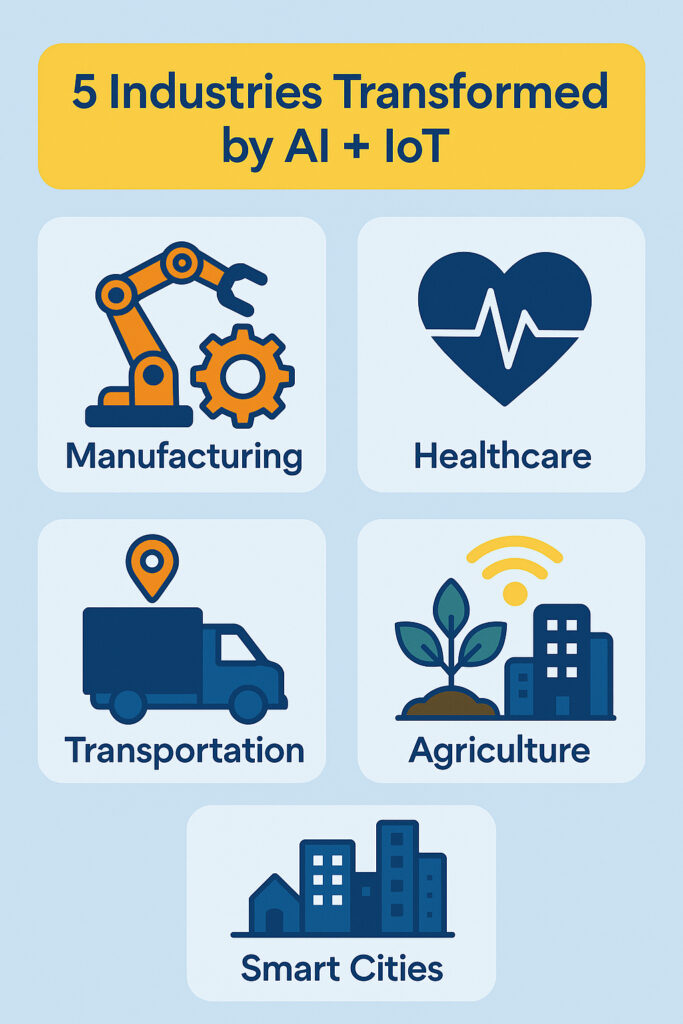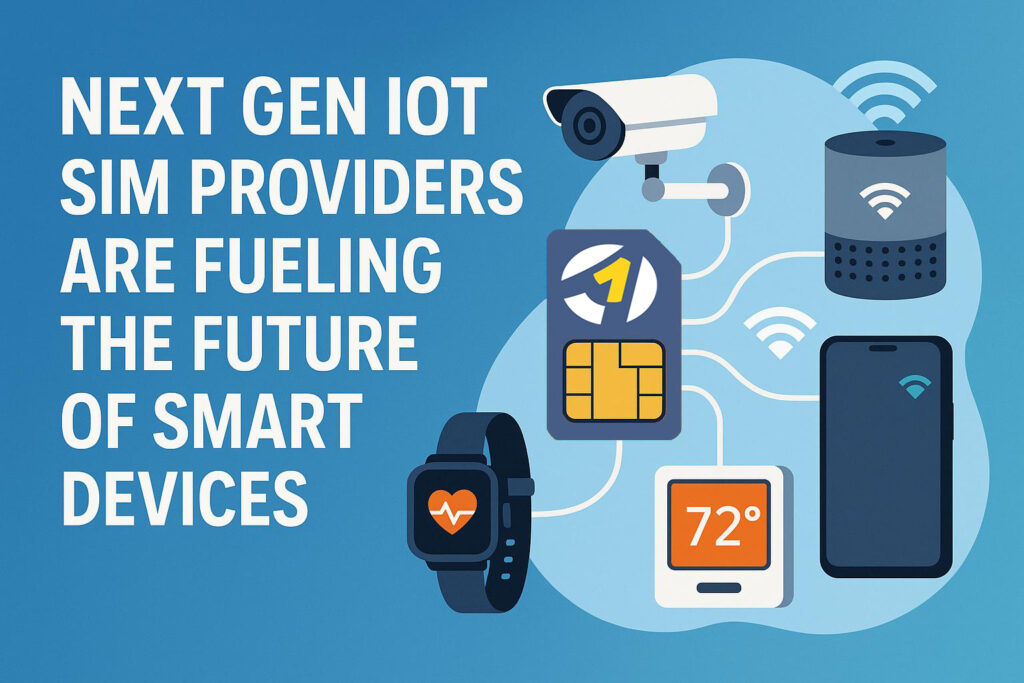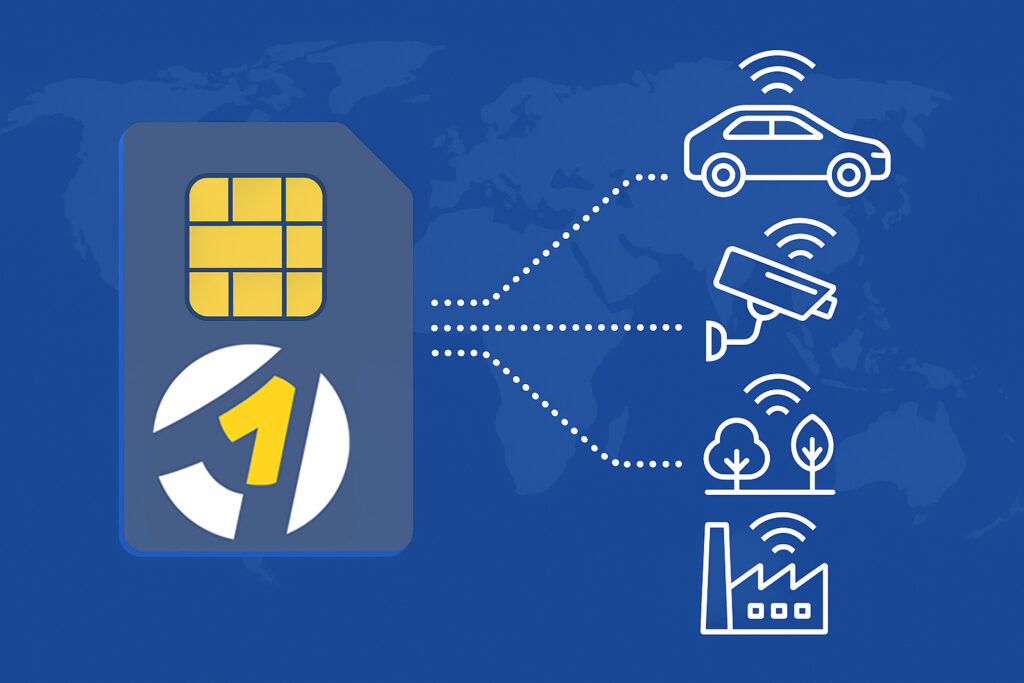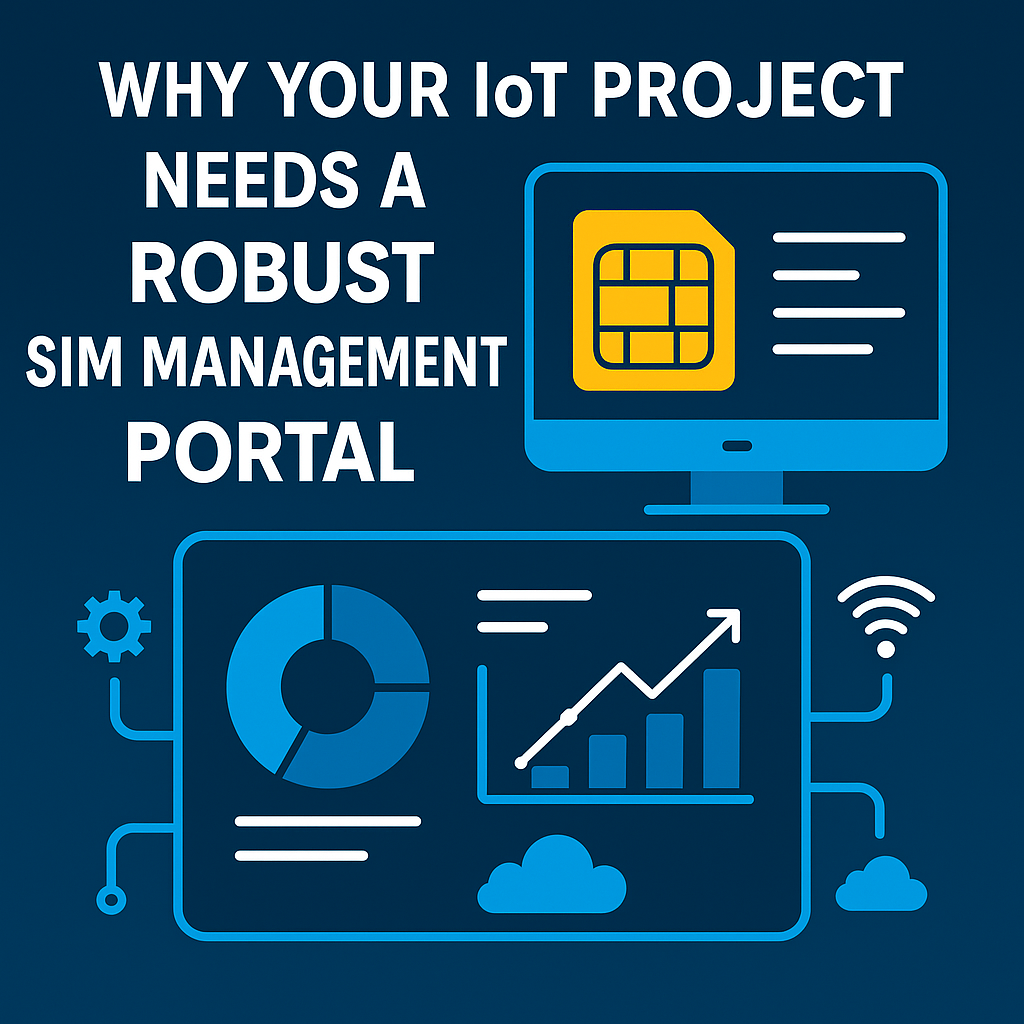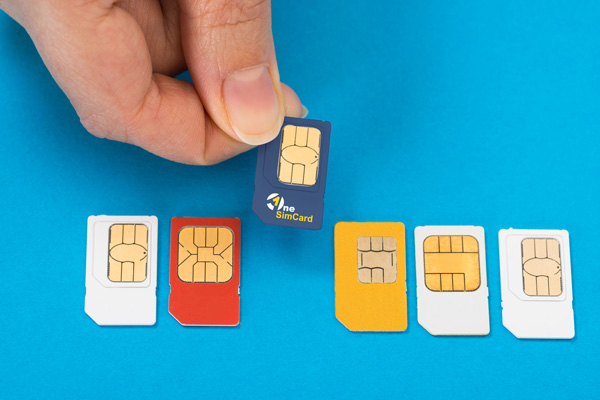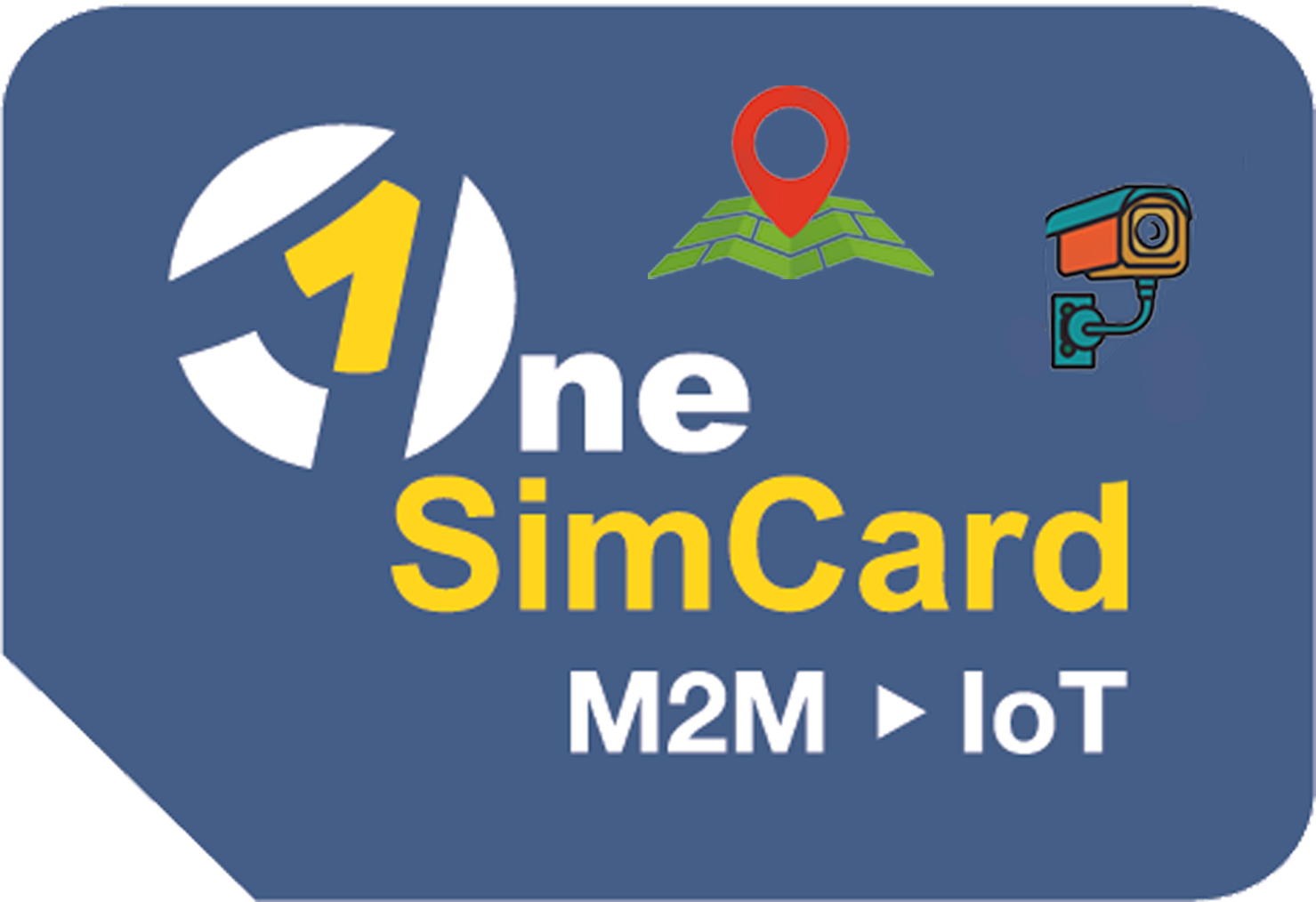
Revolutionizing Supply Chain Visibility Through Connected Technology
Global supply chains are more complex than ever — with goods traveling across continents, through multiple carriers, and under varying conditions. For logistics companies, manufacturers, and retailers, maintaining real-time visibility of assets in transit is no longer optional — it’s essential for efficiency, security, and customer satisfaction.
This is where IoT SIM cards have transformed the game. By enabling asset trackers, sensors, and smart logistics devices to communicate seamlessly across global networks, IoT SIM technology ensures that everything from cargo containers to delivery drones remains visible, monitored, and secure — anywhere on Earth.
🌐 The Need for Global Asset Tracking
In traditional logistics, visibility often ended when an item left a warehouse or port. Once a shipment was on the move, updates came slowly, if at all. Today’s connected economy demands far greater precision — businesses need to know where assets are, how they’re performing, and when they’ll arrive.
Asset tracking powered by IoT SIM cards bridges this gap by providing continuous, reliable data flow from virtually any location. Whether it’s tracking temperature-sensitive pharmaceuticals crossing oceans, monitoring high-value electronics in flight, or ensuring a fleet of autonomous delivery drones stays online — IoT connectivity provides real-time intelligence at every step.
📶 What Makes IoT SIM Cards Different?
Unlike consumer SIM cards, which are tied to a single carrier or region, IoT (Machine-to-Machine) SIM cards are built for global connectivity and long-term operation across multiple networks.
Key Advantages of IoT SIM Cards for Asset Tracking:
- Multi-Network Coverage:
IoT SIMs automatically switch between available carriers to maintain a strong, uninterrupted connection. This ensures global reach — essential for shipments moving across borders or through remote areas. - Non-Steered Connectivity:
Devices select the strongest local signal rather than a preferred network, maximizing uptime and minimizing latency. - Private IP and VPN Security:
Sensitive shipment data travels through secure, encrypted channels, preventing interception or tampering. - Centralized Management Portals:
Fleet managers can monitor thousands of IoT SIMs, track data usage, adjust settings, or suspend SIMs from one dashboard — streamlining operations globally.
🚢 Cargo Ships: Tracking at Sea with IoT Connectivity
Maritime logistics represent one of the most challenging connectivity environments on the planet. Cargo ships travel through regions with limited or no cellular coverage, and yet maintaining communication with onboard tracking devices is vital for global trade.
How IoT SIM Cards Solve This:
- Satellite + Cellular Hybrid Networks:
Many IoT SIMs now integrate satellite fallback options, ensuring data continues to transmit even when ships sail beyond terrestrial networks. - Environmental Monitoring:
Sensors equipped with IoT SIMs monitor temperature, humidity, vibration, and shock — crucial for perishable goods, chemicals, or medical supplies. - Predictive Maintenance:
IoT-enabled machinery sends diagnostic data in real time, allowing shipping companies to anticipate maintenance needs and avoid costly delays.
Example:
A fleet of refrigerated containers on a transatlantic voyage uses multi-IMSI IoT SIMs that automatically connect to the strongest local network at each port. The logistics provider monitors cargo temperature from a centralized platform, ensuring compliance with global cold-chain standards.
🚛 Trucks and Fleets: Smarter Ground Logistics
For road transport, IoT SIMs are powering fleet management and telematics systems that provide unparalleled insight into vehicle location, driver behavior, and cargo condition.
Key Benefits:
- GPS + IoT Integration: Real-time location tracking across countries and carriers.
- Fuel Efficiency: Data analytics help reduce idle time and optimize routes.
- Compliance & Safety: Automatic reporting ensures regulatory compliance and driver accountability.
- Anti-Theft & Recovery: Instant alerts when an asset deviates from its geofence or route.
Example:
A European delivery network uses OneSimCard IoT SIMs in vehicle trackers and dashcams. With multi-IMSI connectivity, vehicles maintain a constant data link across national borders without roaming interruptions, enabling dispatchers to monitor movement, status, and driver safety in real time.
✈️ Air Cargo and Drones: The Future of Real-Time Logistics
As delivery drones and autonomous air vehicles enter mainstream logistics, reliable connectivity becomes mission-critical. Each drone or smart aircraft requires a lightweight, always-on SIM solution to communicate with control systems, ground stations, and air traffic management networks.
M2M SIMs Enable:
- Precise GPS and Telemetry Transmission — Ensuring location and altitude data are updated constantly.
- Remote Diagnostics — Operators can identify issues like battery performance or sensor malfunction mid-flight.
- Geo-Fencing and Compliance — Drones can automatically adjust flight paths to comply with regional airspace restrictions.
- Fail-Safe Communication — Dual-network or satellite-assisted SIMs guarantee command-and-control data flow, even in coverage gaps.
Example:
An international drone delivery service uses OneSimCard IoT SIMs to maintain constant connectivity across continents. Each drone transmits encrypted flight data through a VPN-secured channel, allowing centralized coordination and instant response if a route deviation occurs.
📦 Warehouses, Ports, and Yards: The Connected Ecosystem
The power of IoT SIMs extends beyond vehicles and containers. Warehouses and logistics hubs use connected sensors and asset tags to monitor inventory movement, detect environmental conditions, and reduce bottlenecks.
- RFID & BLE Tracking: IoT SIMs link asset tags and scanners in real time.
- Automation: Data triggers robotics and automated sorting systems.
- Security: Instant alerts for unauthorized access or missing items.
With centralized IoT management, all these systems operate as one cohesive network — from the port to the final mile.
🔒 Why Security and Reliability Are Non-Negotiable
In logistics, connectivity isn’t just about efficiency — it’s about trust. Businesses rely on secure, real-time data to protect shipments, ensure regulatory compliance, and maintain customer confidence.
IoT SIMs Ensure:
- Encrypted Communication Channels (VPN/APN)
- Device Authentication and IMEI Locking
- Private Static IPs for Secure Data Routing
- 24/7 Monitoring and Alerts for Unusual Activity
With millions of connected assets in motion, these safeguards are essential to preventing data breaches and operational downtime.
⚙️ The OneSimCard IoT Advantage
OneSimCard IoT provides the infrastructure that global asset tracking demands:
- Coverage in 200+ countries and territories
- 400+ carrier networks with automatic multi-IMSI switching
- No-steering connectivity for maximum uptime
- Private static IP and VPN options for secure logistics data
- Comprehensive IoT SIM Management Portal for centralized control
Whether it’s a shipping container crossing the Pacific or a drone delivering medical supplies in Europe, OneSimCard IoT keeps your assets connected, visible, and secure — from takeoff to touchdown.
🚀 The Future of Asset Tracking Is Always Connected
As global supply chains become more digitized, the companies that invest in intelligent, IoT-driven tracking systems will lead the way in efficiency and customer satisfaction. IoT SIM cards are no longer just communication tools — they’re the nervous system of global logistics.
From cargo ships to delivery drones, every asset tells a story — and with IoT SIM connectivity, you can listen to it in real time.


